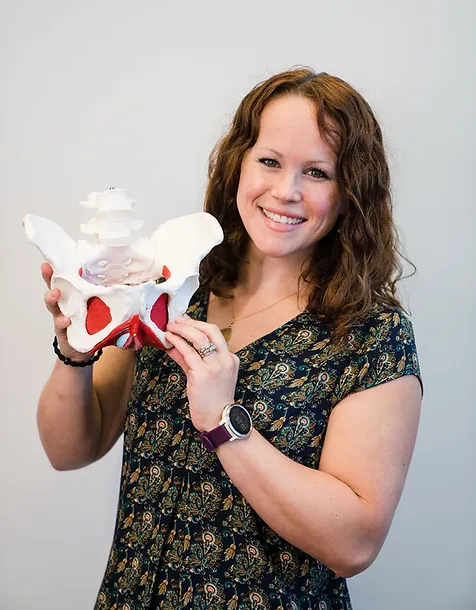It’s relatively simple to acknowledge why the pelvic floor is so crucial during times like pregnancy and labor and birth. But what about in the postpartum period? Specifically, what about the time period that you may be breastfeeding?
In honor of World Breastfeeding Week, we’re sharing some of the lesser-known ways that breastfeeding directly impacts your pelvic floor.
Fluctuating estrogen levels can cause vaginal dryness.
Breastfeeding and lower estrogen levels are closely connected through a biological mechanism known as lactational amenorrhea. Lactational amenorrhea refers to the natural suppression of ovulation and menstruation that occurs in breastfeeding women, primarily due to hormonal changes triggered by the act of breastfeeding.
This temporary suppression of ovulation and menstruation in breastfeeding women is also connected to dryness in the vagina. One interesting way to consider this correlation is nature’s way of allowing the body to heal before it prepares to host another pregnancy.
For women who are experiencing this, there are many safe and effective lubricants that can alleviate dryness. {It is very important to have a clean lubrication that is paraben-free, sulfate-free, glycerine-free to prevent negatively affecting the vaginal microbiome!I personally recommend Good Clean Love, Aloecadabra, Coconu, or Uberlube – even regular coconut oil that you might already have in your pantry will work! Just don’t use oil based lubrications if you are using condoms.} We also recommend that intercourse be slow with LOTS of foreplay to ensure the woman is comfortable. Another method to alleviate any potential discomfort during intercourse is to have the woman orgasm first before any penetration.
Breastfeeding posture plays an important role.
Posture and the pelvic floor are closely interconnected. The pelvic floor muscles form a hammock-like structure at the bottom of the pelvis, supporting the pelvic organs, including the bladder, uterus, and rectum. These muscles play a crucial role in controlling urinary and fecal continence, sexual function, and providing stability to the pelvis and spine.
Posture, which can be implicated during breastfeeding, impacts the pelvic floor in a few key areas, including:
Alignment: Proper posture involves maintaining a natural alignment of the spine, pelvis, and other body segments. When the body is in good alignment, the pelvic floor muscles are better able to function optimally, providing adequate support to the pelvic organs and maintaining continence.
Pelvic Tilt: The position of the pelvis, specifically its tilt, affects the tension and tone of the pelvic floor muscles. A posterior pelvic tilt (where the front of the pelvis tilts upward – which is the most common position we end up sitting in) can weaken the pelvic floor muscles, leading to issues with pelvic organ support and continence. Make sure you put a pillow behind your back to assist good pelvic positioning!
Core Engagement: Good posture involves proper engagement of the core muscles, which includes the pelvic floor. When you engage your core muscles correctly, the pelvic floor muscles are activated and work synergistically with the other core muscles to provide stability and support to the spine and pelvis.
By breastfeeding in positions that provide you the most physical support, you’ll also be supporting your pelvic floor.
The nutritional intake required for breastfeeding is often also beneficial to your pelvic floor.
A well-balanced diet that includes an adequate amount of protein, along with other essential nutrients, can contribute to overall muscle health, including the pelvic floor muscles. The protein requirements for an individual depend on various factors, such as age, sex, weight, activity level, and overall health status. But in general, it is important to consume 1g of protein per pound of body weight. Adequate water intake is imperative as well. You are not only trying to stay hydrated for you, but also need to push fluids to support your milk supply! Aim for ~80 ounces of water a day. And don’t forget your electrolytes! Women who are breastfeeding will need more protein and water on average in order to assist your body in its postpartum healing and maintaining your milk supply.


